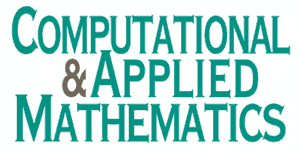Open Access
Computational & Applied Mathematics
Publicação de: Sociedade Brasileira de Matemática Aplicada e Computacional
Área:
Ciências Exatas E Da Terra
Versão impressa ISSN:
2238-3603
Versão on-line ISSN: 1807-0302 Título anterior: Matematica Aplicada e Computacional
